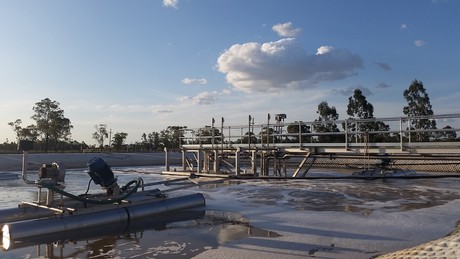Phosphorus reduction in wastewater treatment

Phosphorus, usually in the form of phosphates, originates from sources such as human and animal waste, detergents and food residues. Food and beverage processing plants will very often have phosphate inputs from all of these sources.
Wastewater treatment systems that are commonly used in the food and beverage industry typically manage to reduce biochemical oxygen demand (BOD) and nitrogen effectively, but often are not as effective at reducing phosphorus to acceptable levels.
In order to protect the environment, industrial wastewater treatment plants are tasked with reducing the levels of contaminants, including phosphorus, so that the treated effluent meets environmental standards before it is discharged into a local water body.
Environmental impacts of phosphorus
Phosphorus is a naturally occurring nutrient found in soil and rocks that is required by all living organisms. Phosphorus (phosphates), together with nitrogen (nitrates), is an essential plant nutrient that is readily taken up by plants for growth. However, when these nutrients are available in unwanted excessive amounts, they can fuel rapid plant growth — which is why they are used extensively in fertilisers.
High levels of phosphates in aquatic environments can fuel algal growth, resulting in algal blooms that can potentially lead to eutrophication as the thick algal mats block out sunlight causing the algal cells to die off. Oxygen is stripped from the water column as the dead algae cells decompose, leading to anoxic conditions that can result in mass die-offs of fish and other aquatic life. As the algae and other dead organisms decompose, the organic form of phosphorus bound in the dead organic matter can be converted to orthophosphate, making phosphate available to aquatic plants and algae once again. So in effect, internally recycled phosphorus can fuel another algal bloom, and this cycle can be continually perpetuated.
Phosphorus removal
The effectiveness of phosphorus removal during wastewater treatment can vary, depending on the available equipment and the treatment methods used. Only wastewater treatment plants that employ specialised phosphorus removal techniques will normally be able to remove phosphorus to the desired levels.
Many food processing plants ultimately treat their wastewater by discharging it to aerated settling ponds where the organic waste is broken down by aerobic bacteria. Upstream of this aerobic biological process there may be some primary treatment process such as a DAF or perhaps and anaerobic pond; however, neither of these stages of treatment provide a satisfactory reduction in phosphorus loads, if any at all.
There are two methods of removing phosphorus from wastewater: biological removal and chemical removal. Biological phosphorus removal can be achieved by cycling the activated sludge in anaerobic and aerobic conditions, which can build up a population of microorganisms that are capable of storing phosphorus intracellularly as polyphosphate. If these specific microorganisms exist in sufficient numbers, then the phosphorus will be removed along with the waste activated sludge. Unfortunately, however, to establish and maintain biological conditions for effective and continuous phosphorus removal has proven to be quite challenging for the food and beverage sector.
A much simpler method of removing phosphorus can be carried out by dosing a metal-based coagulant into the wastewater. The metal targets phosphates via two routes:
- When a metal is added to wastewater it reacts directly with phosphates present in the wastewater, forming the metal phosphate, which is insoluble.
- The metal ions hydrolyse in water, forming a dense, gel-like precipitate (metal hydroxide), which binds with phosphorus to form the metal phosphate.
Once the metal combines with phosphorus to form the metal phosphate as discrete flocs, the flocs can be removed from the water phase.

Separation of the metal phosphate is a fairly simple process and can be achieved by filtration or clarification, the latter using settling or flotation methods. Filtration is rarely used as a sole method of treatment as the suspended solids level after the chemical treatment stage is usually too high, although filtration is commonly used downstream of a clarification stage as a means of protection and polishing.
When it comes to flotation (more specially, a dissolved air flotation system or DAF) versus clarifier, either process will work. A small dose of polymer upstream of the separation device will enable a clear virtually solids-free stream to be discharged. Which process to select can depend on available space, cost or ongoing costs, or can simply be put down to a personal preference.
Conclusion
Phosphorus is an important plant nutrient that drives algal blooms in both freshwater and marine ecosystems, and is a key factor for triggering extensive blue-green algae (cyanobacteria) blooms that can be toxic to humans and wildlife. High concentrations of phosphates from human inputs, such as industrial wastewater discharges, can cause eutrophication, resulting in the death of fish, shellfish and other species. As a result, environmental agencies are focusing more attention on phosphorus in wastewater discharges and imposing limits on how much phosphorus can be discharged with industrial wastewater. To ensure certainty in the continuous and efficient removal of phosphorus to comply with given discharge limits, a physical chemical system wins hands down.
Researchers trial magnetic resin to remove PFAS
A magnetic resin invented at The University of Queensland will be trialled at wastewater...
A sustainable approach to increase wastewater recycling
Flinders University research is investigating improved effluent treatment and biosolids removal...
Inverell upgrades 30-year-old aeration system
The project entailed building a new tank at the Inverell Sewage Treatment Plant, to allow...








